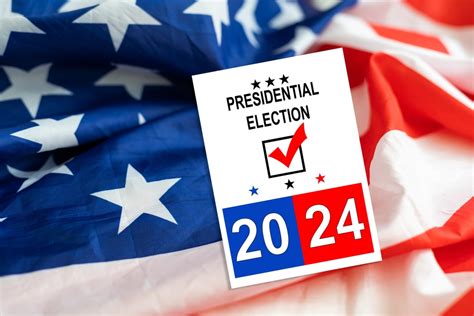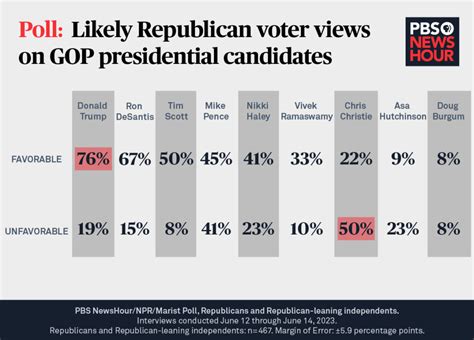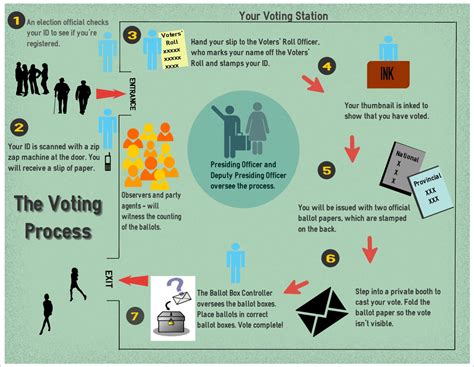Explore insights on voter behavior, economic impact, social media influence, candidate selection, and policy issues shaping election outcomes in this comprehensive analysis.In the complex world of politics, understanding the dynamics that influence election outcomes is crucial for both candidates and voters alike. As citizens head to the polls, various key factors come into play, shaping decisions and ultimately determining the results. From economic conditions to the pervasive influence of social media, each element plays a significant role in swaying public opinion and voter behavior. This article delves into the essential components that define how elections unfold, including the subtle nuances of candidate selection and the impact of pressing policy issues. Join us as we explore these vital aspects and equip yourself with insights that can illuminate the voting process and its implications for our democratic future.
Understanding Key Factors Influencing Voter Behavior
Voter behavior is a complex phenomenon influenced by a myriad of elements. Understanding these key factors can provide insights into why individuals may prefer certain candidates or policies over others. Here are several critical aspects that shape voter decisions:
- Demographics: Age, gender, ethnicity, and education level play significant roles in determining voting preferences. Different demographic groups may prioritize distinct issues based on their life experiences and societal positioning.
- Psychological Factors: Emotional responses, personal beliefs, and cognitive biases can steer voters towards specific candidates or parties. The way voters identify with a candidate’s narrative often influences their likelihood of support.
- Peer Influence: Social circles greatly impact voting behavior. Discussions among friends, family, and colleagues can reinforce or challenge views, affecting an individual’s choices at the polls.
- Media Exposure: The type and frequency of media consumption can shape voter perceptions. News coverage, advertisements, and social media campaigns serve as channels through which voters learn about candidates and issues.
- Political Socialization: A person’s formative years and exposure to political dialogue at home or in educational settings can establish foundational beliefs that persist into adulthood, guiding future voting behavior.
All these key factors influence how different segments of the population engage in the electoral process. By analyzing these behaviors, political strategists can tailor their messages and outreach efforts to resonate with specific voter bases, thereby increasing their chances of electoral success.
The Role of Economic Conditions in Elections
Economic conditions play a pivotal role in shaping key factors that influence election outcomes. Voters’ perceptions of the economy can significantly sway their preferences and decisions at the ballot box. Generally, when the economy is flourishing, incumbent parties often benefit from the prevailing positive sentiment, leading to a higher likelihood of re-election. Conversely, economic downturns or inflation can prompt voters to seek change, often damaging the prospects of incumbents.
Moreover, specific economic indicators, such as unemployment rates, inflation, and GDP growth, serve as barometers for voter sentiment. For instance, high unemployment rates can lead to public dissatisfaction and drive voters toward opposing parties that promise economic revitalization. Similarly, inflation can erode purchasing power, making voters more receptive to candidates focusing on economic recovery strategies and austerity measures.
The impact of economic conditions is not uniform across all demographics. Research indicates that different voter segments prioritize various economic issues. For example, lower-income voters may prioritize job creation, while affluent voters might focus on taxation and wealth distribution policies. Therefore, candidates must craft targeted messages addressing these diverse concerns to resonate with the electorate.
Understanding the economic landscape before an election is crucial for candidates. By effectively communicating their economic strategies and grasping voters’ sentiments around key factors related to the economy, candidates can enhance their chances of securing electoral success.
Impact of Social Media on Election Outcomes
In recent years, social media has become an integral part of the political landscape, shaping the way candidates communicate with voters and influencing public opinion. The key factors surrounding social media’s impact on elections include the following elements:
| Factor | Description |
|---|---|
| Accessibility | Social media platforms provide a relatively low-cost way for candidates to reach a large audience quickly. |
| Engagement | Interactive features on platforms like Twitter and Facebook allow voters to engage directly with candidates, which can enhance voter loyalty and support. |
| Information Dissemination | Campaign messages can be spread virally, giving candidates the opportunity to reach potential voters in real-time. |
| Influencer Partnerships | Collaborations with social media influencers can amplify a candidate’s message to specific demographics. |
| Fact-checking and Misinformation | While social media can spread factual information, it can also facilitate the rapid spread of misinformation, which can skew voter perceptions and decisions. |
The effectiveness of these key factors largely depends on how well candidates utilize social media not just for campaigning, but also for creating a narrative that resonates with their audience. As social media continues to evolve, its role in influencing voter behavior and shaping election outcomes cannot be underestimated. Candidates must consider both the benefits and the challenges it presents as they formulate their campaign strategies.
Key Factors in Candidate Selection and Image
When voters head to the polls, they often evaluate candidates based not just on their policies, but also on their personal attributes and the overall impression they project. Understanding the key factors in candidate selection and image can significantly influence election outcomes.
Some of the most critical key factors include:
| Factor | Description |
|---|---|
| Charisma | The ability to attract and engage voters through charm and personality. |
| Experience | Voters tend to favor candidates with a proven track record in leadership or relevant fields. |
| Public Image | A candidate’s reputation and how they are perceived by the public. |
| Media Presence | How effectively candidates use media platforms to communicate their message and engage constituents. |
| Issue Alignment | How closely a candidate’s positions align with the values and priorities of voters. |
Each of these factors plays a crucial role in shaping a candidate’s image and, consequently, their success at the polls. Voters often look for candidates who not only resonate with their political beliefs but also embody qualities they admire, which highlights the importance of these key factors in the selection process.
How Policy Issues Shape Election Results
When analyzing the key factors that determine election outcomes, one cannot overlook the significance of policy issues. Voters often align their choices with candidates whose policies resonate with their beliefs and needs. As such, differing viewpoints on critical topics can either galvanize or dissipate voter support.
### Importance of Relevant Policy Issues
Policy issues that are relevant to the electorate shape not just the conversations during campaigns but also influence the very platforms candidates choose to run on. For instance, topics such as healthcare, education, and immigration frequently emerge as pivotal issues in U.S. elections. Candidates who articulate clear, actionable plans on these topics can effectively capture voter interest and confidence.
### Voter Prioritization of Policy
Generally, voters prioritize policy issues based on their personal experiences and societal factors. According to surveys, individuals may rank these issues differently based on demographic factors, including age, socioeconomic status, and geographic location. An illustrative table of priority issues among different demographics could look like this:
| Demographic Group | Top Policy Issues |
|---|---|
| Millennials | Climate Change, Student Debt Relief |
| Baby Boomers | Healthcare, Social Security |
| Gen Z | Racial Equality, Gun Control |
### Candidates’ Responses to Policy Issues
Candidates’ stances on policy issues can often dictate their success or failure at the ballot box. Those who respond swiftly and effectively to emerging issues or crises tend to gain an advantage. For example, responsiveness to economic downturns or public health crises can enhance a candidate’s appeal. Additionally, failure to address pressing policy issues can lead to voter apathy or opposition.
### Conclusion
In conclusion, understanding how policy issues shape election results is essential for candidates and their campaign strategies. As they navigate the complex landscape of voters’ expectations and priorities, aligning their policies with the electorate’s needs can significantly influence the overall outcome of elections. An awareness of these key factors not only aids candidates but also enables voters to make informed decisions that can affect their communities and country profoundly.
Frequently Asked Questions
What are the key factors that influence election outcomes?
Key factors include voter demographics, economic conditions, campaign strategies, media influence, and political candidate appeal.
How does voter demographics impact election results?
Voter demographics such as age, race, education, and income levels significantly influence voting behavior and preferences, which can sway election outcomes.
What role does the economy play in determining election outcomes?
The state of the economy, including unemployment rates and inflation, often impacts voter sentiment, leading them to favor candidates who they believe can improve economic conditions.
How important are campaign strategies in elections?
Effective campaign strategies, including messaging, advertising, grassroots organizing, and outreach, are crucial for engaging voters and motivating them to turn out on election day.
What is the impact of media coverage on elections?
Media coverage shapes public perception of candidates and issues, influencing voter opinions and potentially swaying undecided voters toward one side or the other.
Why is candidate appeal a significant factor in elections?
A candidate’s charisma, communication skills, and relatability can enhance their appeal, making voters more likely to support them, particularly in close races.
Can social issues affect election outcomes?
Yes, social issues such as healthcare, education, and civil rights can mobilize specific voter groups and impact election results, particularly when they resonate strongly with the electorate.









